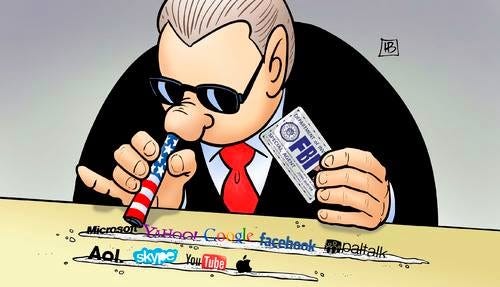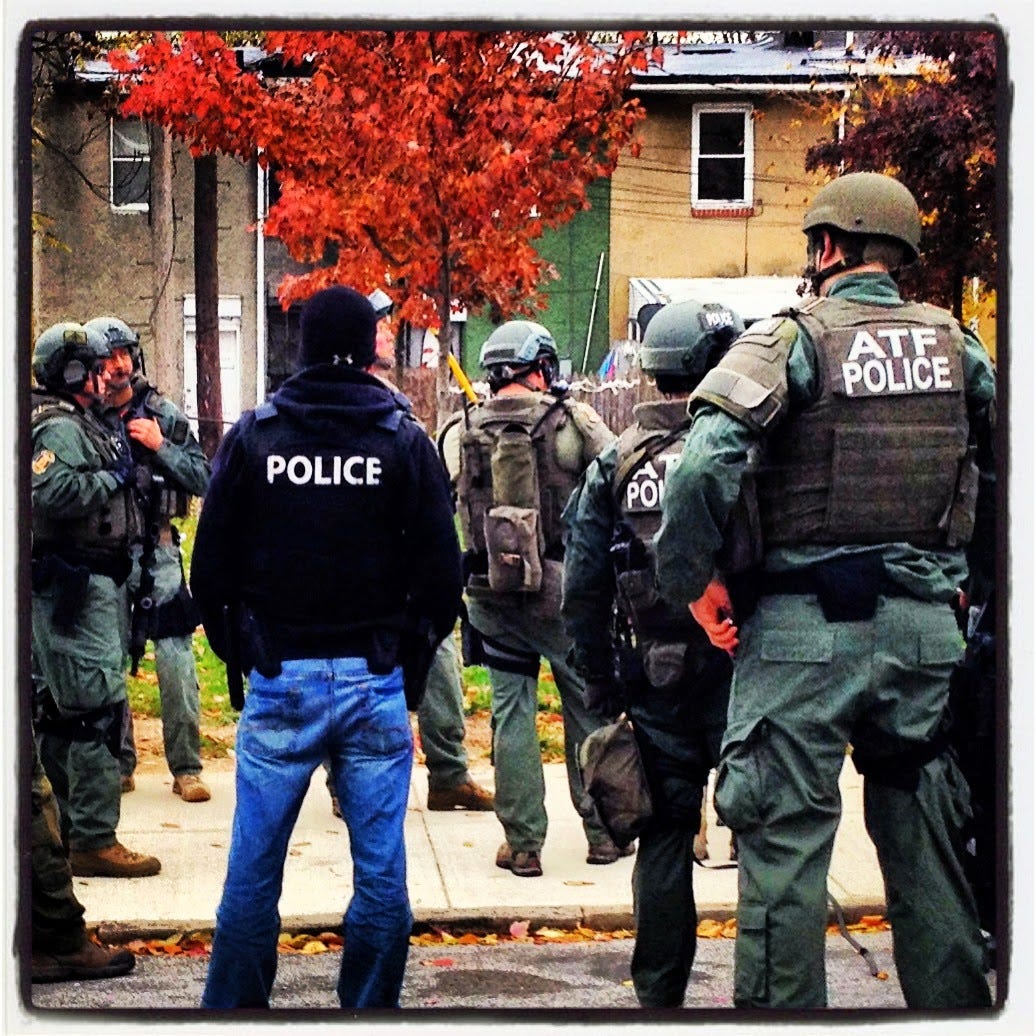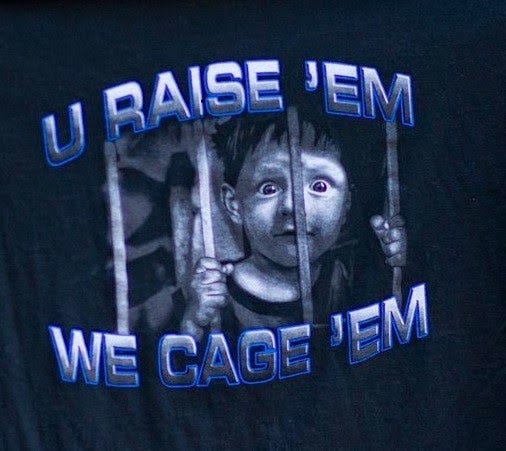The NSA & law enforcement's war on innocent Americans

There are two key points necessary to understand the domestic aspect of NSA surveillance: the integral role of the FBI in helping the NSA spy on Americans, and the acceptance of usage of NSA material for domestic and traditional law enforcement purposes. These are contingent, of course, on the fact that the NSA’s procedures allow widespread targeting of Americans.
The Los Angeles police dept. added drones to its surveillance arsenal & claims they'll be used sparingly to spy on Americans.
LAPD dept officials claim they dosn't intend to use the new hardware to keep watch from above over an unsuspecting public. If they're used at all, the remotely controlled aircraft will be called on only for "narrow and prescribed uses" that will be made clear to the public, the statement said.
Where have we heard that before? Can you the NSA!
Click here to read more.
New information about the degree of spying on the U.N. and other foreign officials, documents demonstrating the economic espionage aspect of NSA surveillance, and some interesting technical details about NSA programs. Among those technical details, what was especially striking for those of us in the United States were the slides that described how the FBI enables NSA surveillance.
A series of slides demonstrated that the FBI essentially serves as an attack dog for the NSA, doing the NSA’s domestic dirty work. One slide, which was previously published, notes that for purposes of PRISM, relationships with communications providers are only through the FBI. (slide23.jpg). Another slide describes how the FBI and NSA partner to “address an unreliable and incomplete Facebook collection system.” (slide81.jpg).
There are also a series of slides describing the FBI’s relationship with Microsoft. One notes that the NSA is now able to collect Microsoft Skydrive data as a “result of the FBI working for many months with Microsoft to get this tasking and collection solution established .” (slide27.jpg). The documents also show that the NSA, Department of Justice, and FBI collaborated to collect Skype data. (slide29.jpg). Similarly, after Microsoft enabled encrypted chat: “MS, working with the FBI, developed a surveillance capability to deal with the new SSL.” (slide30.jpg).
Clearly, the NSA would have a much more difficult—if not impossible—time collecting information without the FBI.
None of this should be surprising. It’s easy to forget that Section 215 of the Patriot Act allows the Federal Bureau of Investigation—not the NSA—to apply for production of business records. Remember the Verizon order that jumpstarted the NSA surveillance conversation? That order was an application to the Foreign Intelligence Surveillance Court by the FBI for production of Verizon’s business records to the NSA.
The national discourse since June 6, 2013, has been about NSA spying. But talking about NSA spying on its own doesn’t make sense. We need to be talking about the surveillance state as a whole.
And it’s not just the FBI that we should be concerned about. The NSA’s role in ordinary investigations is not new information. But every document that expands on the NSA’s involvement in anything domestic, and not national security related, should ring alarm bells for everyone in the United States. We know now that:
The NSA data is fed to the Drug Enforcement Agency’s “Special Operations Division.” The DEA in turn uses this information in ordinary investigations, while cloaking the source– even from judges and prosecutors.
The Foreign Intelligence Surveillance Court authorized the NSA to share unminimized data with the FBI, as well as the CIA, with the “Raw Take” order. Prior to this “agencies [had] to ‘minimize’ private information about Americans — deleting data that is irrelevant for intelligence purposes before providing it to others.”
Information sharing between the FBI, NSA, and CIA has been routinized through “software which would automatically gather a list of tasked PRISM selectors every two weeks to provide to the FBI and CIA.” (slide31.jpg). Similarly, the NSA sends “operational PRISM news and guidance to the FBI and CIA so that their analysts could task the PRISM system properly, be aware of outages and changes, and optimize their use of PRISM.”
And, most recently, we learned that the NSA partners with the DEA to record nearly all cell phone calls in the Bahamas– but not for national security purposes. This surveillance helps “to locate ‘international narcotics traffickers and special-interest alien smugglers’—traditional law-enforcement concerns, but a far cry from derailing terror plots or intercepting weapons of mass destruction.” In fact, a 2004 memo discusses the NSA’s integral role in the war on drugs.
http://www.infowars.com/how-the-nsa-is-transforming-law-enforcement/
NSA storing ‘millions of images’ a day to fill facial recognition database:
The NSA is harvesting (spying) huge numbers of images of people from communications that it intercepts through its global surveillance operations for use in sophisticated facial recognition programs, according to top-secret documents. The spy agency’s reliance on facial recognition technology has grown significantly over the last four years as the agency has turned to new software to exploit the flood of images included in emails, text messages, social media, videoconferences and other communications, the NSA documents reveal. Agency officials believe that technological advances could revolutionize the way that the NSA finds intelligence targets around the world, the documents show. The agency’s ambitions for this highly sensitive ability and the scale of its effort have not previously been disclosed.
The agency intercepts “millions of images per day” — including about 55,000 “facial recognition quality images” — which translate into “tremendous untapped potential,” according to 2011 documents obtained from the former agency contractor Edward J. Snowden. While once focused on written and oral communications, the NSA now considers facial images, fingerprints and other identifiers just as important to its mission of tracking suspected terrorists and other intelligence targets, the documents show. “It’s not just the traditional communications we’re after: It’s taking a full-arsenal approach that digitally exploits the clues a target leaves behind in their regular activities on the net to compile biographic and biometric information” that can help “implement precision targeting,” noted a 2010 document. State and local police are relying on a wide range of databases of facial imagery, including driver’s licenses and Facebook, to identify anyone. The FBI is developing what it calls its “next generation identification” project to combine its automated fingerprint identification system with facial imagery and other biometric data. One NSA PowerPoint presentation from 2011, for example, displays several photographs of an unidentified man — sometimes bearded, other times clean-shaven — in different settings, along with more than two dozen data points about him. These include whether he was on the TSA no-fly list, his passport and visa status, known associates or suspected terrorist ties, and comments made about him by informants to American intelligence agencies. It is not clear how many people around the world, and how many Americans, might have been caught up in the effort. Neither federal privacy laws nor the nation’s surveillance laws provide specific protections for facial images. Given the NSA’s foreign intelligence mission, much of the imagery would involve people overseas whose data was scooped up through cable taps, Internet hubs and satellite transmissions.http://www.nytimes.com/2014/06/01/us/nsa-collecting-millions-of-faces-from-web-images.html?_r=0
The NSA violates international human rights standards:
The NSA surveillance lacks “legality” in that NSA surveillance laws are largely governed by a body of secret law developed by a secret court, the Foreign Intelligence Surveillance Court (FISC), which selectively publishes its legal interpretations of the law;
The NSA surveillance is neither “necessary,” nor “proportionate,” in that the various programs in which communications data are obtained in bulk violate the privacy rights of millions of persons who are not suspected of having any connection to international terrorism;
The NSA surveillance programs are not supported by competent judicial authority because the only judicial approval, if any, comes from the FISC, which operates outside of normal adversarial procedures such that the individuals whose data are collected lack access to the court;
The NSA surveillance programs lack due process because the FISC presents no opportunity for a public hearing;
The NSA surveillance programs lack user notification: those whose data is obtained do not know that their communications have been monitored and hence they cannot appeal the decision nor get legal representation to defend themselves;
The NSA surveillance programs lack the required transparency and public oversight, because they operate in secret and rely on gag orders against the entities from whom the data are obtained, along with secret, if any, court proceedings;
The NSA surveillance programs damage the integrity of communication systems by undermining security systems, such as encryption, requiring the insertion of surveillance back doors in communications technologies, including the installation of fiber optic splitters in transmission hubs; and
The US surveillance framework is illegitimate because it applies less favorable standards to non-US persons than its own citizens; this discrimination places it in violation of the International Covenant on Civil and Political Rights (ICCPR).
More broadly, the United States justifies the lawfulness of its communications surveillance by reference to distinctions that, considering modern communications technology, are irrelevant to truly protecting privacy in a modern society. The US relies on the outmoded distinction between “content” and “metadata,” falsely contending that the latter does not reveal private facts about an individual.
The DOJ contends that the collection of data is not surveillance—it argues, contrary to both international law and the Principles, that an individual’s privacy rights are not infringed as long as her communications data are not analyzed by a human being. It’s clear that the practice of digital surveillance by the United States has overrun the bounds of human rights standards.
https://www.eff.org/deeplinks/2014/05/unnecessary-and-disproportionate-how-nsa-violates-international-human-rights
There's no doubt our govt destroyed NSA spying evidence:
The Electronic Frontier Foundation (EFF) told a federal court today that there was no doubt that the government has destroyed years of evidence of NSA spying – the government itself has admitted to it in recent court filings. In a brief filed today in response to this illegal destruction, EFF is asking that the court make an "adverse inference" that the destroyed evidence would show that plaintiffs communications and records were in fact swept up in the mass NSA spying programs.
EFF filed its first lawsuit challenging illegal government spying in 2006. The current dispute arises from Jewel v. NSA, EFF's 2008 case that challenges the government's mass seizure of three kinds of information: Internet and telephone content, telephone records, and Internet records, all going back to 2001. EFF's brief notes that the government's own declarations make clear that the government has destroyed five years of the content it collected between 2007 and 2012, three years worth of the telephone records it seized between 2006 and 2009, and seven years of the Internet records it seized between 2004 and 2011, when it claims to have ended the Internet records seizures.
"The court has issued a number of preservation orders over the years, but the government decided – without consent from the judge or even informing EFF – that those orders simply don't apply," said EFF Legal Director Cindy Cohn. "Regular civil litigants would face severe sanctions if they so obviously destroyed relevant evidence. But we are asking for a modest remedy: a ruling that we can assume the destroyed records would show that our plaintiffs were in fact surveilled by the government."
"EFF and our clients have always had the same simple claim: the government's mass, warrantless surveillance violates the rights of all Americans and must be stopped. The surveillance was warrantless under the executive's authority and it is still warrantless under the FISA court, as those orders are plainly not warrants." said Cohn. "The government's attempt to limit our claims based upon their secret, shifting rationales is nothing short of outrageous, and their clandestine decision to destroy evidence under this flimsy argument is rightly sanctionable. Nevertheless, we are simply asking the court to ensure that we are not harmed by the government's now-admitted destruction of this evidence."https://www.eff.org/press/releases/eff-court-theres-no-doubt-government-destroyed-nsa-spying-evidence
Two judges have declared ATF stings unconstitutional:

Two federal judges have ruled that widely used sting operations designed to ensnare suspects with the promise of a huge payday for robbing an imaginary drug stash house are so "outrageous" that they are also unconstitutional. One judge said the charges were so unfair that he threw them out after three suspects already pleaded guilty.
Each of the men admitted to charges that would put them in prison for seven years or more. But instead of sending them there, U.S. District Court Judge Manuel Real declared that federal agents had "created the fictitious crime from whole cloth" and that their conduct was unconstitutional. Then he dismissed the charges and ordered that all three be set free.
Real's unusual decision this month is the latest and most pointed indication yet of a growing backlash against undercover operations that have become a central part of the U.S. Bureau of Alcohol, Tobacco, Firearms and Explosives' efforts to target violent crime. Until now, federal courts have largely signed off on the practice, if not always enthusiastically. As the stings proliferate across the United States, an increasing number of judges are offering new resistance to the government's tactics.
"Judges are getting really frustrated with not hng sufficient answers on how these people were targeted or how they came to be the subject of the sting," said Katharine Tinto, a professor at the Benjamin N. Cardozo School of Law who has studied government stings. "There's a real discomfort that we're turning people into more serious criminals."
Nowhere has that frustration played out more dramatically than in Los Angeles, where Real is the second judge in two months to throw out charges in a stash-house case after concluding that the scheme violated suspects' constitutional due process rights. Another judge there, Otis Wright, dismissed a similar case in March, concluding in a scathing order that a "reverse-sting operation like this one transcends the bounds of due process and makes the Government the oppressor of its people."
The DOJ has appealed both decisions.
http://www.usatoday.com/story/news/nation/2014/05/29/atf-stash-house-sting-backlash/9719403/
What cop T-shirts tell us about police mentality in America:
Earlier this week, an anonymous public defender sent Gothamist this photo of an NYPD warrant squad officer wearing a t-shirt with a pretty disturbing quote from Ernest Hemingway:

The Village Voice reports that the quote was also printed on t-shirts worn by NYPD's infamous Street Crimes Unit, which was disbanded after shooting unarmed immigrant Amadou Diallo 41 times in 1999 as Diallo reached for his wallet. The Voice also reports that at least two NYPD police commissioners have used the phrase "hunter of men" to describe police work -- Bernard Kerik and Howard Safir.
There have been a number of other incidents over the years in which cops have donned t-shirts that reflect a mentality somewhat less lofty than "protect and serve." Most recently, a Northern California union for school police officers came under fire for printing up and selling these shirts as a fundraiser:

Radley Balko talks about America's militarized police state, click here to watch the disturbing video.
Click here to view the Cato Institute's police paramilitary (swat) raid map in America.
To find out more read Balko's book "Overkill: The Rise of Paramilitary Police Raids in America"
http://www.huffingtonpost.com/2013/06/21/what-cop-tshirts-tell-us-_n_3479017.html


